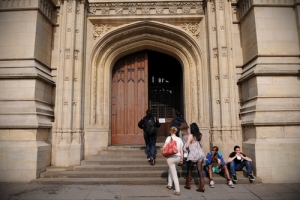
Photo by Shutterstock.com/1000 Words
The hidden scandal of tuition fees and student loans is that the whole system is thoroughly reactionary. It is a triple scandal, going far beyond the heavy financial burden the existing system imposes on graduates. The current settlement also protects the status quo in higher education and discourages it from modernising. And it does so by subsidising the better off at the expense of the disadvantaged.
While the Conservatives seem set on preserving this scandalous system unchanged, Labour merely want to change how it is funded, without taking any action to challenge the huge shortcomings in how the proceeds are distributed. It therefore falls to Liberal Democrats to propose a radical overhaul of how this country funds lifetime education opportunities for all. In doing so, the party can earn redemption for its earlier role in helping to introduce the system as it operates today.
Soon-to-be leader Vince Cable will face criticism of his part in hiking the existing fees up to the £9,000-a-year level. But at the time, as he has explained, he did his best to make it redistributive. The cap on repayments means that it operates in effect as a graduate tax. As personal finance expert Martin Lewis explains in his student loans mythbuster, people who never realize high earnings potential never have to pay off the total loan. But this compromise, although an important measure, merely tinkers on the fringes of a fundamentally flawed system.
A licence to print money
Just how flawed was highlighted last week by Andrew Adonis, the Labour peer who first introduced student loans. He set out the deficiencies of how tuition fees now work, asking:
Why did we give university vice-chancellors a licence to print money, and pay themselves £400,000 salaries, in a decade when austerity has dominated every other public service, including schools and hospitals?
The answer, quite simply, is that this has always been a financially irresponsible system that encourages profligacy. Even though many in the universities still strive to deliver a worthy public service, the system is not set up to reward their efforts.
How can there be any accountability when the money is lent by financiers with no stake in the outcome? How can market mechanisms operate when students compete for places and have no easy way to judge the quality of outcome? With the government no longer directly funding institutions, who is monitoring whether they are spending their income wisely?
No wonder they have all raised their fees to the highest level, irrespective of the value delivered or the cost of delivery. In a detailed and thorough critique of government plans to open up the system to new providers in Times Higher Education earlier this year, financial commentator Martin Wolf succinctly summed up the problem in a single aphorism:
If one can eat lobster at other people’s expense, one tends to eat too much.
But if the current system is not fit-for-purpose, what are the alternatives? This is the first of three articles I’ll publish today on the triple scandal of tuition fees — yes, there are still two more scandals to expose. Next comes the second scandal along with proposals for a new source of funding. Finally, I’ll reveal the third scandal and propose a new model to govern how the funding is put to work.
Pingback: The second scandal of tuition fees and a new source of funding (2/3) | Raw Liberal
Pingback: The third scandal of tuition fees and the case for a lifetime learning fund (3/3) | Raw Liberal